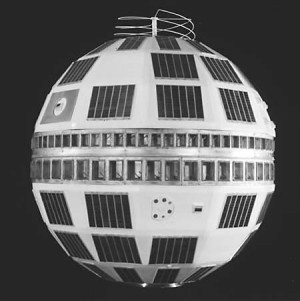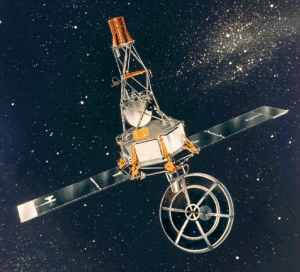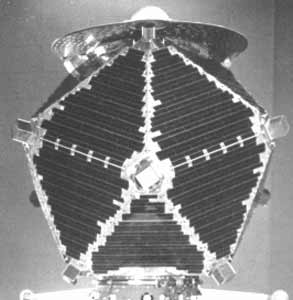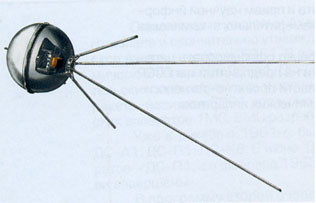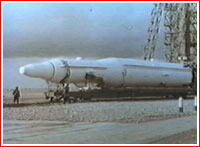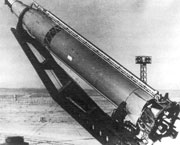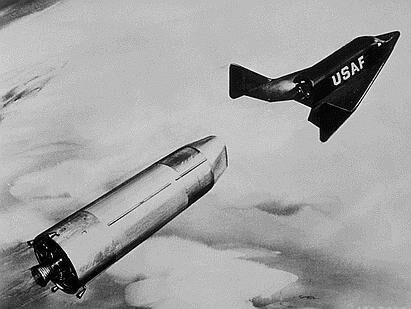Well.
That's certainly exciting!
But is it at all possible that an X-15 could have been boosted to full orbital speed using a rocket that could possibly be lifted by a B-52, and is it possible that said X-15 could survive reentry?
The second point I think you sort of addressed, first by saying it was a specially modified X-15b, presumably the mods included upgrading its thermal capabilities to the point where they hoped it could take it, and also by pointing out it just about didn't, what with the controls melting.
But it's that first step that's the killer. I'd buy it if the plane were launched from a rocket taking off from the ground.
But to get into orbit, a certain minimum of reaction mass is needed, depending on how good the rocket is. For hydrogen-oxygen engines that ratio is something like 9:1 or more. For kerosene-oxygen it would be worse, and so for just about any other possible chemical means.
I believe this is the proposal OTL that ITTL was made to work, sort of. But note that there was no suggestion here that the spaceplane should be launched from an airplane carrier! The Navaho missile was a cruise missile; the liquid-fueled rocket booster was meant to lift a fairly large ramjet to high altitude and nearly 3 times the speed of sound where its airbreathing engines would then sustain it for an intercontinental flight to its target. It would launch from a ground pad, vertically.
The X-15/Navaho proposal kept that mode of launch.
From the Astronautix X-15B page
That's for the X-15 itself; having misplaced my calculator it's a bit beyond me to estimate the necessary orbital velocity for the low and elliptical orbit proposed, which had a perigee of just 70 km altitude (hence single-orbit, or if the Soviets wanted to scoff they could call it a 360 degree suborbital flight!). Call it 8000 meters/sec. The spaceplane stage then can boost itself the last 2450 of that, leaving the Navaho booster cluster to take it to 5550. Note that is far faster than the boosters were designed to reach in their main mission!
Data on the engines developed for the proposed operational version of Navaho:
Now totally ignoring the question of the mass of the engines themselves plus stage tankage and so on, I estimate the all-up weight of the spaceplane plus fuel alone for the booster would be 100 tons.
Launching from an airplane there are certain advantages to be sure. To make the above estimate not only did I ignore a really significant set of masses, I used the vacuum Isp; that would almost be justified with a stratospheric drop launch. Also the plane's own velocity helps--but just a tiny bit, it couldn't reduce the necessary launch mass by even as much as 10 percent.
So the question is, could any B-52, no matter how modified, take off and climb with a suspended load in the ballpark of 100 (minimum!) to as much as 200 tons? That's what it takes!
I think maybe the Antonov Mryia might do this today. Just as far as weight goes anyway. For a drop-launch such as the X-15 program used OTL, the plane was mounted on a modified missile-launch pylon on one wing; quite obviously we can't mount a 150 ton missile in the same configuration! They'd have to do something like mount it on the top of the fuselage, which the huge Antonov plane can do (having been upgraded from a standard production transport, already the most massive plane in commercial operation, to carry the Soviet Buran shuttle on its back)--then fire the engines while the plane separates and dives for its life with engine exhaust plume giving its tail a good blast! It would be nice to mount the thing below the plane but there is just no way to do that!
Anyway I doubt a B-52 could lift all that weight at all. I could be wrong about that I suppose, if it were modified with minimal fuel tankage weight for a short-endurance mission and otherwise lightened (but at the same time, reinforced in spots!) for its special mission. Perhaps.
A straight vertical ground launch, as proposed, on the other hand, would surely involve a somewhat more massive booster, say around 200 tons allowing for lower engine efficiency at sea level. So what? Either way, whipping up a suitable reconfiguration of Navaho components is a major task, why not keep it simple by extrapolating from the missile's designed mode of operation rather than mixing in a dubiously attainable air launch?
That's certainly exciting!
But is it at all possible that an X-15 could have been boosted to full orbital speed using a rocket that could possibly be lifted by a B-52, and is it possible that said X-15 could survive reentry?
The second point I think you sort of addressed, first by saying it was a specially modified X-15b, presumably the mods included upgrading its thermal capabilities to the point where they hoped it could take it, and also by pointing out it just about didn't, what with the controls melting.
But it's that first step that's the killer. I'd buy it if the plane were launched from a rocket taking off from the ground.
But to get into orbit, a certain minimum of reaction mass is needed, depending on how good the rocket is. For hydrogen-oxygen engines that ratio is something like 9:1 or more. For kerosene-oxygen it would be worse, and so for just about any other possible chemical means.
I believe this is the proposal OTL that ITTL was made to work, sort of. But note that there was no suggestion here that the spaceplane should be launched from an airplane carrier! The Navaho missile was a cruise missile; the liquid-fueled rocket booster was meant to lift a fairly large ramjet to high altitude and nearly 3 times the speed of sound where its airbreathing engines would then sustain it for an intercontinental flight to its target. It would launch from a ground pad, vertically.
The X-15/Navaho proposal kept that mode of launch.
From the Astronautix X-15B page
Crew Size: 1. Spacecraft delta v: 2,450 m/s (8,030 ft/sec).
Gross mass: 13,500 kg (29,700 lb).
Unfuelled mass: 4,500 kg (9,900 lb).
Height: 15.00 m (49.00 ft).
Span: 6.80 m (22.30 ft).
Thrust: 262.45 kN (59,000 lbf).
Specific impulse: 276 s.
That's for the X-15 itself; having misplaced my calculator it's a bit beyond me to estimate the necessary orbital velocity for the low and elliptical orbit proposed, which had a perigee of just 70 km altitude (hence single-orbit, or if the Soviets wanted to scoff they could call it a 360 degree suborbital flight!). Call it 8000 meters/sec. The spaceplane stage then can boost itself the last 2450 of that, leaving the Navaho booster cluster to take it to 5550. Note that is far faster than the boosters were designed to reach in their main mission!
Data on the engines developed for the proposed operational version of Navaho:
Encyclopedia Astronautica
LR83-NA-1
XLR-83-NA-1
Credit: Boeing / Rocketdyne
Rocketdyne Lox/Kerosene rocket engine. 683 kN. Development ended 1958. Isp=282s. Planned production version of the engine for the booster of the Navaho G-38 intercontinental cruise missile.
Designed for booster applications. Gas generator, pump-fed. Three gimballed engines would have been used in the Navaho booster. The engine was fully developed before Navaho G-38 cancellation.
Thrust (sl): 602.000 kN (135,334 lbf). Thrust (sl): 61,393 kgf.
Status: Development ended 1958.
Diameter: 0.88 m (2.88 ft).
Thrust: 683.00 kN (153,544 lbf).
Specific impulse: 282 s.
Specific impulse sea level: 248 s.
Now totally ignoring the question of the mass of the engines themselves plus stage tankage and so on, I estimate the all-up weight of the spaceplane plus fuel alone for the booster would be 100 tons.
Launching from an airplane there are certain advantages to be sure. To make the above estimate not only did I ignore a really significant set of masses, I used the vacuum Isp; that would almost be justified with a stratospheric drop launch. Also the plane's own velocity helps--but just a tiny bit, it couldn't reduce the necessary launch mass by even as much as 10 percent.
So the question is, could any B-52, no matter how modified, take off and climb with a suspended load in the ballpark of 100 (minimum!) to as much as 200 tons? That's what it takes!
I think maybe the Antonov Mryia might do this today. Just as far as weight goes anyway. For a drop-launch such as the X-15 program used OTL, the plane was mounted on a modified missile-launch pylon on one wing; quite obviously we can't mount a 150 ton missile in the same configuration! They'd have to do something like mount it on the top of the fuselage, which the huge Antonov plane can do (having been upgraded from a standard production transport, already the most massive plane in commercial operation, to carry the Soviet Buran shuttle on its back)--then fire the engines while the plane separates and dives for its life with engine exhaust plume giving its tail a good blast! It would be nice to mount the thing below the plane but there is just no way to do that!
Anyway I doubt a B-52 could lift all that weight at all. I could be wrong about that I suppose, if it were modified with minimal fuel tankage weight for a short-endurance mission and otherwise lightened (but at the same time, reinforced in spots!) for its special mission. Perhaps.
A straight vertical ground launch, as proposed, on the other hand, would surely involve a somewhat more massive booster, say around 200 tons allowing for lower engine efficiency at sea level. So what? Either way, whipping up a suitable reconfiguration of Navaho components is a major task, why not keep it simple by extrapolating from the missile's designed mode of operation rather than mixing in a dubiously attainable air launch?
